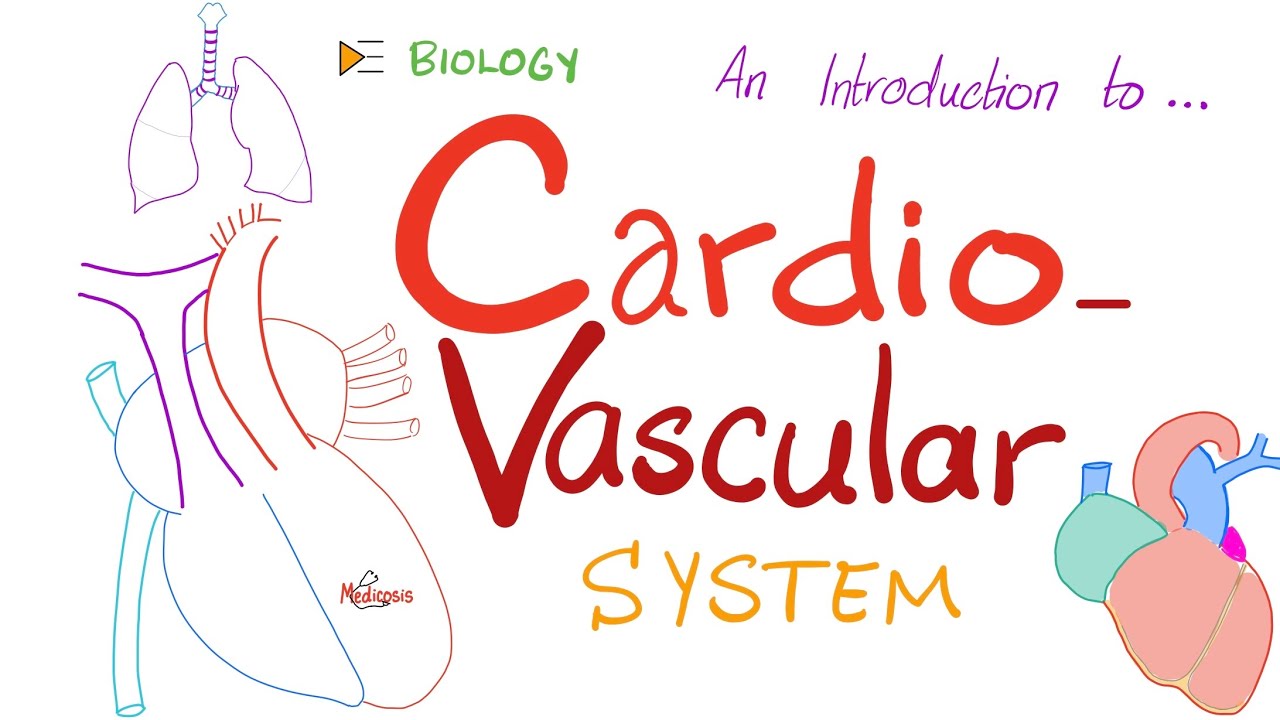FETAL CIRCULATION
Summary
TLDRThis educational video script delves into fetal circulation, highlighting its distinct structures and processes compared to postnatal circulation. It emphasizes the role of the placenta and umbilical cord in oxygen and nutrient delivery, bypassing the lungs which are inactive in this stage. Key fetal circulation features include the foramen ovale, ductus arteriosus, and ductus venosus, facilitating blood flow. The script guides viewers through a flowchart for clearer understanding and concludes with postnatal changes where these fetal structures close, adjusting circulation for lung involvement in oxygenation.
Takeaways
- 🌟 Fetal circulation is also known as prenatal circulation and is distinct from postnatal circulation due to structural differences.
- 🩸 The placenta and umbilical cord are central to fetal circulation, carrying oxygenated blood from the mother to the fetus.
- 💙 The umbilical vein carries oxygenated blood, while the two umbilical arteries carry deoxygenated blood, which is contrary to the adult circulation.
- 🫀 The foramen ovale is an opening between the right and left atria in the fetal heart, allowing blood to bypass the lungs and enter the systemic circulation.
- 🔄 The ductus arteriosus is a shunt between the pulmonary artery and the aorta, directing blood away from the non-functioning lungs and into the systemic circulation.
- 🔄 The ductus venosus is a connection between the umbilical vein and the inferior vena cava, allowing oxygenated blood to bypass the liver.
- 🌀 Blood from the umbilical vein supplies the liver and the rest goes to the inferior vena cava, where it mixes with deoxygenated blood from the superior vena cava.
- 🚫 The lungs are not involved in fetal circulation as the fetus obtains oxygen and nutrients directly from the mother through the placenta.
- 🛑 Postnatal changes include the closure of the foramen ovale, which becomes the fossa ovalis, and the closure of the ductus arteriosus.
- 📚 Understanding the fetal circulation can be aided by creating a flowchart, which helps to visualize and remember the complex pathways of blood flow.
Q & A
What is fetal circulation?
-Fetal circulation, also known as fetal placental circulation or prenatal circulation, refers to the blood circulation that occurs during the prenatal period in a fetus. It is distinct from postnatal circulation due to several structural differences.
How does fetal circulation differ from postnatal circulation?
-In fetal circulation, the lungs are not involved as the fetus obtains oxygen and nutrients from the mother through the placenta. In postnatal circulation, the lungs play a crucial role in oxygenating the blood.
What are the key structures involved in fetal circulation?
-The key structures involved in fetal circulation include the placenta, umbilical cord, foramen ovale, ductus arteriosus, and ductus venosus.
What is the role of the placenta in fetal circulation?
-The placenta performs respiratory, nutritive, and supportive functions for the fetus, facilitating the exchange of oxygen, nutrients, and waste products between the fetus and the mother.
How does the umbilical cord contribute to fetal circulation?
-The umbilical cord contains one umbilical vein carrying oxygenated blood from the placenta to the fetus and two umbilical arteries carrying deoxygenated blood back to the placenta.
What is the foramen ovale and its function in fetal circulation?
-The foramen ovale is an opening between the right atrium and left atrium of the fetal heart, allowing blood to bypass the pulmonary circulation and directly enter the systemic circulation.
Describe the ductus arteriosus and its significance in fetal circulation.
-The ductus arteriosus is a connection between the pulmonary artery and the aorta, allowing blood to bypass the lungs and be circulated systemically. It is essential for fetal circulation as the lungs are not used for respiration.
What is the ductus venosus and its role in fetal circulation?
-The ductus venosus is a connection between the umbilical vein and the inferior vena cava, allowing a portion of the oxygenated blood from the placenta to bypass the liver and directly enter the heart.
How does blood flow through the fetal heart?
-In fetal circulation, blood from the umbilical vein flows into the liver and then divides, with some going to the inferior vena cava and some bypassing the lungs through the foramen ovale. Blood from the superior and inferior vena cava enters the right atrium, and most of it moves to the left atrium, while some goes to the right ventricle and then to the pulmonary artery, which is connected to the aorta via the ductus arteriosus.
What are the postnatal changes that occur in the fetal circulation structures?
-After birth, the foramen ovale closes and becomes the fossa ovalis, and the ductus arteriosus constricts and closes, eventually becoming a fibrous cord known as the ligamentum arteriosum. These changes are necessary for the transition to postnatal circulation.
Why is it important to understand fetal circulation for medical professionals?
-Understanding fetal circulation is crucial for medical professionals to diagnose and manage conditions related to fetal development, such as issues with the placenta or umbilical cord, and to understand the transition to postnatal circulation.
Outlines

このセクションは有料ユーザー限定です。 アクセスするには、アップグレードをお願いします。
今すぐアップグレードMindmap

このセクションは有料ユーザー限定です。 アクセスするには、アップグレードをお願いします。
今すぐアップグレードKeywords

このセクションは有料ユーザー限定です。 アクセスするには、アップグレードをお願いします。
今すぐアップグレードHighlights

このセクションは有料ユーザー限定です。 アクセスするには、アップグレードをお願いします。
今すぐアップグレードTranscripts

このセクションは有料ユーザー限定です。 アクセスするには、アップグレードをお願いします。
今すぐアップグレード関連動画をさらに表示

Fetal Circulation by L. McCabe | OPENPediatrics

Sistem Peredaran Darah Janin Sebelum dan Setelah Lahir

Anatomi dan Fisiologi Sistem Sirkulasi Janin

Sirkulasi Darah Fetus aka Janin

Anatomi Systema Cardiovasculare : Sirkulasi fetus

The Cardiovascular System (CVS) ❤️ 🩸 - A Simple Introduction - Biology, Anatomy, Physiology
5.0 / 5 (0 votes)
